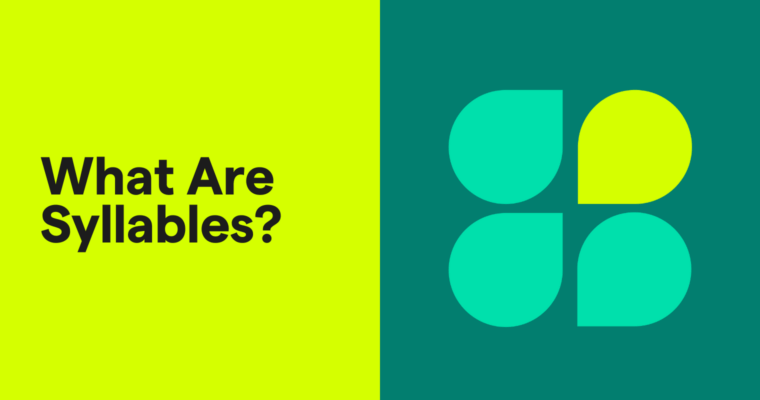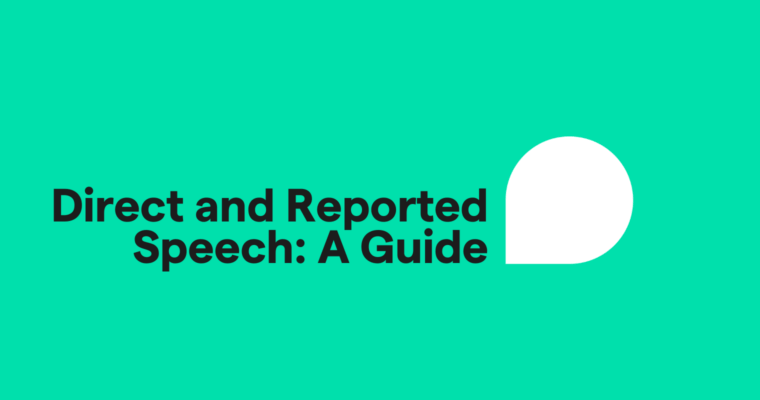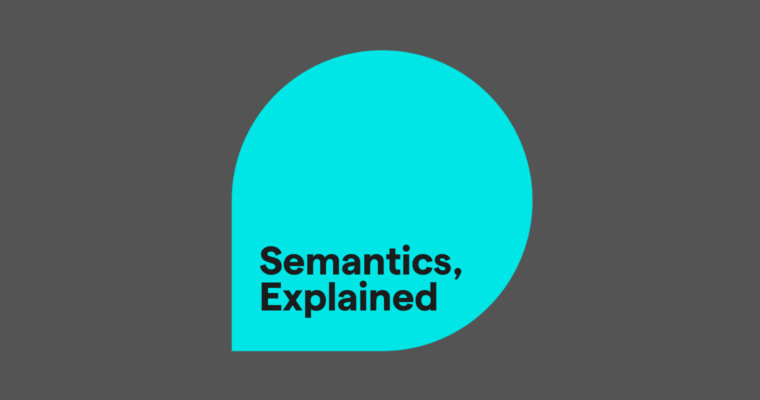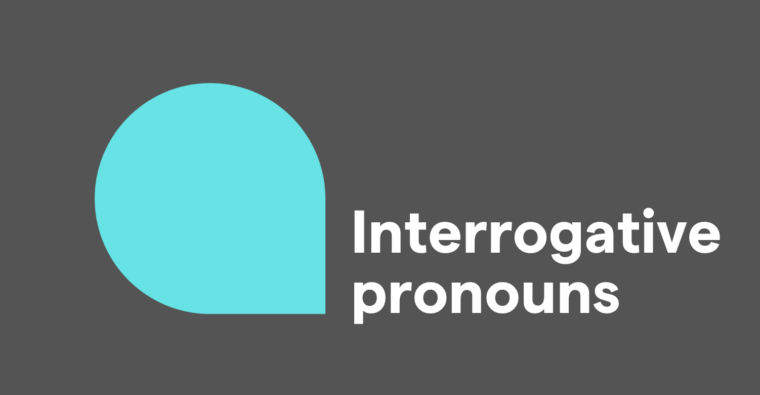
Key takeaways:
- Syllables are the “beats” of a word and help break down complex words for easier pronunciation.
- Recognizing syllables allows you to identify stressed and unstressed sounds, which is key for correct pronunciation.
- Learning syllabication patterns helps you confidently tackle complex or long words, improving your writing and speaking skills.
English pronunciation isn’t always intuitive. The same letter combinations can produce completely different sounds in different words. However, you can practice your pronunciation by breaking words down into syllables. Syllables are the sonic units of a word, sometimes called the “beats” of a word.
Humans naturally break down words sonically while we speak. Each time we say a new syllable, our mouths change shape to produce a distinct sound. We can break complex words into recognizable syllable patterns by noticing these shifts and counting syllables as they happen.
In this post, we’ll explore everything you need to know about syllables, from understanding their structure to using them to navigate even the most complex words.
Table of contents
What are the different types of syllables?
Stressed and unstressed syllables
Using syllables to tackle extra-long words
What is a syllable?
A syllable is a unit of pronunciation that usually contains a vowel sound and/or one or more consonant sounds. Notice that we say a “sound,” not just a vowel or consonant itself. A vowel sound includes the vowel and any surrounding consonants that create a single sound.
For example, the word blanket has two syllables: blan + ket. The first syllable is formed from the bl, ay, and n sounds from “blan,” and the second syllable comes from the k, eh, and t sounds in “ket.”
What are the different types of syllables?
There are six different syllable types in the English language. Learning how to recognize and count syllables can help with pronunciation, reading comprehension, and spelling. Here’s a breakdown of the six different types of syllables:
- Closed syllables: A closed syllable has one vowel sound and ends with a consonant. Examples: stop, fort, sell, book, smart.
- Open syllables: An open syllable is a unit that ends in a vowel sound. Examples: boba, tea, fly, tree, Velcro.
- Vowel-consonant-e syllables (VCE): These syllables end in a silent e, which is why they are sometimes called “magic-e” syllables. This silent e gives the earlier vowel a long vowel sound. Examples: care, fire, mine, more.
- R-controlled syllables (VR): R-controlled syllables contain a vowel followed by the letter r. Examples: blur, ear, sir, for.
- Diphthong syllables: Diphthongs are two vowels that combine to form a unique sound. Common English diphthongs are oi, ou, and similar pairs. Examples: point, house, break, bite.
- Consonant-le syllables: In consonant-le syllables, the e is silent, and the syllable is formed by the consonant followed by le. These always occur in polysyllabic words. The consonant-le syllable is specific to words that end in le because you will only hear and pronounce an l. Examples: bicycle, file, circle, example.
Stressed and unstressed syllables
When you’re speaking, syllables in a word can be stressed or unstressed. Recognizing the difference between them can help improve pronunciation and speech rhythm. Here’s how to identify them:
1 Listen for louder or clearer sounds
Stressed syllables are usually louder, clearer, and longer than unstressed syllables. For example, in the word computer, the second syllable, pu, is stressed, while the other syllables are softer.
2 Focus on vowel sounds
Stressed syllables often have clearer, more pronounced vowel sounds. In the word adventure, the second syllable, ven, is stressed and has a clearer vowel sound than the others.
3 Recognize the quiet parts
Unstressed syllables are softer and pronounced more quickly than stressed ones. For example, in the word photograph, the second syllable, to, is unstressed and spoken quickly, while the first syllable, pho, is stressed.
How do you count syllables?
You can figure out how many syllables are in a word by determining the number of vowel sounds and using different methods like writing, listening, clapping, and counting your chin’s movements. Some of these techniques will come naturally to you, and others may not be as comfortable. Try out a few and see which you like best.
When counting vowel sounds, it’s important to remember that two vowels can blend to create a single sound (which, as we mentioned above, is called a diphthong). For example, the vowels o + u make an ow sound, which is a diphthong. Therefore, the word proud has two vowels but only one syllable.
Chin method
Your chin is an excellent syllable counter. Place your hand underneath your chin and say a word out loud. Count one syllable each time your chin pushes down into your hand. You may have to exaggerate your pronunciation because some sounds don’t cause a big chin movement.
Example:
Take the word drop. As you say it, your chin will move down only once, indicating it has one syllable.
Take the word important. As you say it, your chin will move down three times, indicating it has three syllables.
Clap method
For the clap method, say a word out loud and clap every time you hear a vowel sound. Don’t think too hard; just clap whenever your instincts tell you the sound changes.
Example:
Take the word banana. If you say it out loud, you’ll clap three times:
- ba– (clap)
- –na– (clap)
- –na (clap)
The three claps represent the word’s three vowel sounds—and three syllables.
Listen method
Once you begin to recognize what a syllable is, you won’t need to break into applause to read a paragraph anymore. The listen method is simple: Listen for new vowel sounds. Each new vowel sound is a new syllable.
Example:
Say the word elephant out loud. Listen for the vowel sounds:
- el– (first syllable)
- –e– (second syllable)
- –phant (third syllable)
There are three vowel sounds in elephant, so it has three syllables.
Written method
If you’re more of a visual learner, the written method might help you count syllables. First, count all of the vowels in the word, then:
- Subtract one for every pair of vowels that makes a sound together (for example: oo, ie, ou, au).
- Subtract one for every silent vowel (like an e at the end of a word).
After subtracting the vowel pairs and silent vowels, the remaining number of vowels represents the number of syllables.
Example:
Take the word bookshop.
- First, count the vowels: o, o, and o. That gives us three vowels.
- The oo in bookshop is a vowel pair, which counts as just one sound. So, subtract one vowel sound for the oo.
- Now, we’re left with two vowel sounds, meaning bookshop has two syllables.
All of these rules have exceptions, but they are a good way to get started until counting syllables becomes more natural.
Using syllables to tackle difficult words
If you come across a long or complicated word, one way to improve your pronunciation is by reading it in reverse. This method may seem unusual at first, but it becomes an effective tool if you can already count syllables.
For example, let’s break down the word monosyllabic. Trying to pronounce it from the start might lead to a jumble of sounds. However, by practicing backward and adding one syllable at a time, it becomes easier:
- bic
- la-bic
- syl-la-bic
- o-syl-la-bic
- mon-o-syl-la-bic
This method can take longer, so it’s best used for particularly long or tricky words. Additionally, learning common prefixes and suffixes will help, as they often stand out as distinct syllables.
Strengthen your syllable skills with Grammarly
Syllables are more than just a linguistic concept—they’re the building blocks of communication. From the words we speak to how we read and write, syllables shape our language experience. Understanding them can boost your confidence as a communicator, whether you’re learning a new language, improving your writing, or simply curious about how words work.
Write with confidence with Grammarly
Take your writing to the next level with Grammarly. It enhances clarity and confidence while also considering syllable structure for a smooth, rhythmic flow in your writing. By identifying awkward phrasing and suggesting alternatives, it helps refine your sentences for better cadence. Try Grammarly for free.
Syllables FAQs
Below are frequently asked questions about syllables to help you understand their structure, types, and function in language.
What’s the difference between stressed and unstressed syllables?
Stressed syllables are the parts of a word that you emphasize when speaking. They tend to be:
- Louder
- Longer
- Pronounced with more force
Unstressed syllables, on the other hand, are softer and quicker.
For example, in the word banana, the second syllable, na, is stressed, while the first and third syllables are unstressed. Understanding which syllables are stressed helps you pronounce words more clearly and naturally.
How do syllables help with pronunciation?
Syllables break words into smaller, easier-to-pronounce parts, each typically containing a vowel sound that guides pronunciation.
Knowing how a word is divided into syllables helps you pronounce it correctly, especially when it comes to placing stress on the right syllable. For example, breaking celebrate into cel-e-brate helps you pronounce it more smoothly, with the stress on the first syllable.
What are the different types of syllables?
Syllables are categorized by which letters they use and which sounds they make as a result. There are six types of syllables:
- Closed
- Open
- Vowel-consonant-e
- R-controlled
- Diphthong
- Consonant-le syllables.






